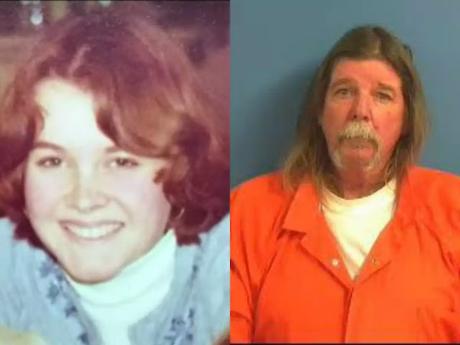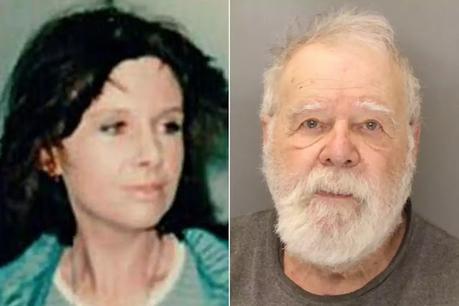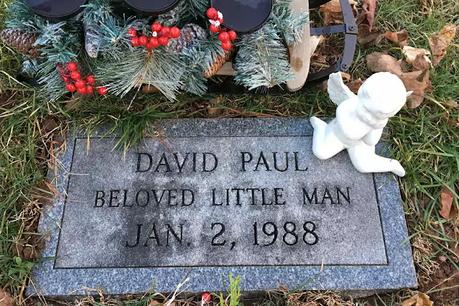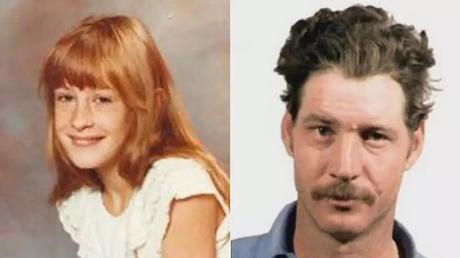
pic credit: The Ringer
According to a Scripps Howard news service study conducted by the FBI's uniform crime report, nearly 185,000 cases of homicide and non-negligent manslaughter went unsolved from 1980 to 2008. The lack of advanced equipment and investigative methods sufficient enough to establish the identities of killers and perpetrators from a few DNA samples have largely contributed to this large number of cold cases.
However, this is now possible today. Thanks to a whole slew of new technologies and research developments that we now have access to. Here are five women whose murders went unsolved for decades before modern technology finally brought their killers to justice.
Number five, Helene Pruszynski

pic credit: Google Images
Helene Pruszynski was a 21-year-old student at Wheaton College in Norton, Massachusetts, and had been working as an intern at a radio station in Denver called KHOWAM. She had only been in town for a little over two weeks, staying with her aunt and waiting for classes to resume.
On January 16th, 1980, she was on her way home from another exhausting day at her internship when she mysteriously disappeared. - Police also in on the case have been concentrating their efforts near this bus stop on South Broadway. It's believed that Miss Pruszynski got off her bus after work here Wednesday night. She was abducted sometime after that. Last seen at a bus stop in Inglewood.
The following day, Helene's body was found in a field in present-day Highlands Ranch in Colorado, her arms tied behind her back. She had been stabbed to death. Investigators were able to recover and collect DNA samples from the scene, but since the technology wasn't that advanced at the time, they were unable to carry out an analysis.
The case quickly grew cold despite a profile being developed and uploaded to the criminal database years later in 1998. In 2017, the case was once again reopened with detectives conducting forensic genealogy, matching the preserved samples from the 1980 crime scene to DNA profiles uploaded by people from all over the world to online public databases like ancestry.com and gedmatch.com.
Investigators were hoping to find individuals related to the killer in the hopes of finally bringing justice to a murder that had remained unsolved for nearly three decades. They came back with several positive matches, which allowed them to identify distant relatives, two of whom allowed authorities to access their family trees.
An intense process of elimination followed until investigators narrowed it down to James Curtis Clanton, previously known as Curtis Allen White, who is a truck driver living in Lake Butler, Florida. He was quickly put under surveillance and detectives were able to secretly collect his DNA from a discarded beer mug.
That DNA was a complete match to those gathered from the 1980 crime scene. At the time of Helene's murder, Clanton was working for a local landscaping business, having been previously imprisoned in Arkansas. In an interview with detectives, he admitted to murdering the young college student, saying that he had abducted her at knifepoint.
He had then bound her hands and drove her to the field where her lifeless body was eventually found. In the chilling confession, he said that he had instructed Helene to get on her knees, promising her that she would be allowed to return home after he was through with her.
He had no intention whatsoever of allowing the young woman to live. In 2019, the 62-year-old was charged with first-degree murder and second-degree kidnapping, although charges for assault fell through because the statute of limitations had already expired.
Authorities also claimed that a composite sketch of Helene's killer, based on an interview with an eyewitness, significantly resembled Clanton's booking photo when he was previously arrested in Florida. In court, Defense Counsel Daniel Cunny argued that Clanton's remorse over the murder had increased through the years, especially after he became a father.
Moreover, he claimed that Clanton had pleaded guilty to finally afford the Pruszynski's some closure. After the emotional three hour hearing on July 1st, 2020, where more than a dozen of Helene's family members and closest friends came forward to testify about the impact of her murder, Douglas County judge, Theresa Slade, sentenced Clanton to life in prison with the possibility of parole, a punishment agreed upon when he had pleaded guilty to the crime.
There was a poem that Helene wrote that was read by one of her friends, and it said, "Let us live today with every hopeful promise of tomorrow," said, Judge Slade as the hearing came to a close. "And Mr. Clanton, you get to keep having that. How you face that is up to you."
In the end, a reopened investigation that saw the combined efforts of 22 detectives from local and federal law enforcement, as well as from the Metro Denver Crime Stoppers brought Helene Pruszynski's murderer to justice, 40 years after she was brutally stabbed to death.
Number four, Gloria Korzon

pic credit: Oxygen
One of the most well-known cold cases in Bucks County, Pennsylvania is that of Gloria Korzon's disappearance. She worked at an electronics plant in Horsham, residing with her husband, William Walter Korzon, at Packer Town Road in the nearby town of Warrington.
Gloria and William were married in Massachusetts in 1967, but their relationship was far from loving. Less than a year into their marriage, William threatened to kill his wife and was arrested, forcibly institutionalized in a mental hospital.
The following year, the Korzons moved to Warrington, Pennsylvania where local police would respond to eight incidents at their home between 1976 and 1980. Gloria filed for protection orders against William in two separate incidents, claiming that he had threatened and harmed her.
However, she always withdrew her complaints right before they went to court. In February 1981, she handed a sealed letter to her stepfather, telling him not to open it unless something happened to her. About a month later on March 6th, she vanished without a trace.
Gloria's disappearance was only reported four months later when her brother, Ralph Kitter, along with the rest of her family grew suspicious after they failed to speak to Gloria despite numerous calls to her home. More than that though, her mother had received a Mother's Day card that had allegedly come from Gloria.
However, the signature was not in her handwriting, nor did she use her full name when writing to her family. The family's fears increased when they opened Gloria's sealed letter to find a three-page list of assaults that William had allegedly inflicted on her. After the police report was lodged, authorities spoke with William at the Korzon residence.
However, he claimed that she had gone to visit an aunt in Florida. While Gloria did have an aunt residing there, she had not laid eyes on her niece in several months, and to top it all off, the person William named didn't even exist.
William told authorities, along with anyone who would listen, that he had contact with Gloria numerous times after she disappeared, but he never managed to provide substantial evidence to back up his claims.
In 1987, his divorce on grounds of desertion was finalized. Nearly everyone from Gloria's family and friends to local police authorities believed that William had killed his wife due to the many conflicting accounts that he gave about the last time that they had seen each other.
He claimed that she had walked out on him in January 1980, but returned periodically for car repairs. In another instance, he said that he had given Gloria her 1968 Jaguar XKE in 1987, but nobody was able to prove that he had done it. Investigators even dug up his yard in 1986 to look for Gloria's body.
However, the only thing they found was the corpse of her beloved pet dog. In 1997, after attempts to find her body led nowhere, Gloria Korzon was declared legally dead. Her disappearance sat untouched for years, but in 2019, authorities once again questioned William about his wife's disappearance.
This time, the 76-year-old wearily asked if they had found her body and proceeded to admit that he had caused harm to her for years. In December of that year, William Korzon pleaded guilty to voluntary manslaughter, claiming that he had accidentally killed Gloria in the middle of an argument.
He alleged that she'd fired a shot at him with a handgun and that he had accidentally shot her in self-defense. Afterward, he dumped her in the Delaware River near Lambertville, New Jersey, and forged her signature on paychecks, credit union checks, and tax returns for years following her disappearance.
He also admitted to signing the Mother's Day card and to perjuring himself during a court hearing in 1988, which determined what percentage of Gloria's estate he had been entitled to. Despite the location of her final resting place now known, too much time had gone by and Gloria's body was never found.
In April 2019, William was arrested after an investigative grand jury determined that there was sufficient evidence to indict him on charges of criminal homicide. In court, William faced the grieving and angry faces of his wife's family and circle of friends.
"We always knew you did this, Bill," said Gloria's niece, Jennifer Potter. "We never believed your lies. You took the coward's way out." Later, Jennifer claimed that they had always suspected William and that they had lived with this conjecture along with the uncertainty for over 38 years.
County Judge Raymond McHugh sentenced William to a jail term of seven and a half to 15 years for the death of his wife, Gloria, as well as for committing forgery, by profiting off her death, to quote District Attorney Matthew Weintraub. With this, one of the most notorious cold cases in Bucks County was finally resolved, allowing Gloria's family to finally find some peace.
Number three, Karen Roche

pic credit: Oxygen
In the wee hours of January 1988, amid a snowy and frigid winter, a newborn infant was found frozen and deceased, abandoned underneath a tree in a parking lot in Connecticut. The authorities named him David Paul and buried him underneath a tombstone that read beloved little man.
For the past 30 years, they've been holding an annual graveside memorial on the anniversary of his tragic and mysterious death. On January 2nd, 2020 on the 32nd anniversary of David's discovery, detectives from the Meriden police force confronted Karen Kuzmak Roche, who had been identified as the mother of the abandoned baby.
Investigators had used the latest in genetic DNA technology, partnering up with IdentiFinders International, a private company based in California, specializing in identifying the thousands of John and Jane Doe's across the United States.
Later, South Meriden Police Chief Jeffrey Cossette told the media that Karen's jaw dropped when she found police officers on her doorstep, although the expression on her face indicated that she had been waiting for over 32 years to be identified as little David Paul's mother and abandoned.
On January 8th, a DNA test confirmed the relationship between the two. At the time, Karen was 25 years old and lived a few blocks away from the parking lot where David's body was discovered. She explained that she had concealed the pregnancy from the father, delivering the newborn at 5:30 AM on December 28th, 1988.
Knowing that she could not sustain her baby, she placed him in the parking lot, claiming to have phoned a local fire department immediately after to report the infant's location. However, her claims didn't line up with the facts of the case.
Nearly a week had passed before local law enforcement discovered the infant and while a call had been placed to the fire department, it was reported that the caller had provided hardly any details to the authorities and had not specified that a deserted baby was in the parking lot.
More importantly, the tree where David had been placed lay adjacent to the parking lot, invisible from the area that responders had searched. Police Chief Cossette said that Roche had been honest with the police throughout the investigation, remorseful over her panicked actions that led to the tragic death of hours old David Paul.
The 56-year-old claimed that she still suffers from guilt to this day and has never had children because of what she did. Dr. Colleen Fitzpatrick, a world-renowned DNA scientist, and forensic genealogist as well as the founder of IdentiFinders International, explained that she had first learned about little David in 2012.
Moved by the tragic cold case, she began to independently work on identifying his mother, obtaining the baby's DNA profile from the Meriden police department in 2014. In 2017, she and Dr. Margaret Press developed a way to create a family tree from the samples provided to her, and this eventually led to Karen Roche.
As one of the rookie detectives who worked on the case back in the 1980s, the mystery of David Paul or baby John Doe was profoundly personal for Police Chief Cossette.
While no charges would be pressed against Karen due to Connecticut's 20 years statute of limitations on manslaughter charges, finally closing the case months ahead of his scheduled retirement felt incredibly fulfilling for him.
Number two, Julie Fuller

pic credit: Fox News
On June 27, 1983, 11-year-old Julie Fuller was staying with her mother and brother at the Kensington Motor Lodge and Apartments, a motel in Arlington. The energetic and lively young girl went to take out the trash and never came back.
The following day, her body was found by construction workers along the banks of the Trinity River, situated in Northeast Fort Worth. Julie had been assaulted in a certain way we can't say in this article, and while her killer left behind DNA samples, the police database CODIS returned no matches.
The cold case tormented the Fuller family for decades, especially Lee Fuller, who never gave up looking for his little sister's murderer. In 2018, he finally received the closure that he had dreamed of since he was 13 years old.
The Fort Worth Police Department had partnered with Parabon NanoLabs, a company based in Virginia that uses genealogical mapping to track DNA not included in police databases. In February 2018, they managed to create a photo of what Julie's murderer looked like, identifying a DNA match a year and a half later in December 2019.
James Francis McNichols was determined to be Julie Fuller's killer. His family confirmed that McNichols had been in Fort Worth at the time of Julie's murder and more reports were uncovered that supported his presence in the area.
Moreover, there was evidence that McNichols had preyed on others, but these assaults were never reported to the police. However, James Francis McNichols will never be punished nor will he ever be brought to justice since he passed away in 2004 while living in Iowa.
Fort Worth homicide detective Tom O'Brien was largely disappointed with the outcome of the case, having worked on it since 2013 in a bid to put Julie's murderer behind bars. Lee Fuller too felt a mixed bag of emotions, although, for him and the rest of his family, it felt good to finally receive closure.
Number one, Jane Doe

On Halloween night in 1980, the lifeless body of a young woman was found in a cornfield in Brooks County, Georgia. Authorities concluded that she'd been stabbed to death. The woman, thought to be between the age of 18 and 24, couldn't be identified, and the case of Jane Doe quickly went cold.
For over 38 years, her death mystified the residents of the small town of Quitman. While Jane Doe's murderer did end up behind bars, he never revealed her name. Shortly after the discovery of the woman's body, a 52-year-old fair employee named George Newsome confessed to the murder.
He had been arrested inside a stolen camper where police discovered rope that matched the ligature marks on the woman's neck. George told the authorities that he had invited her to join the traveling fair, but killed her over an argument about another man.
He was sentenced to life in prison and died behind bars in 1988, all the while refusing to cooperate with authorities and give up her name. In a futile attempt to identify Jane Doe, her body was put on display in a local funeral home.
However, this proved to be unsuccessful. Later, a local family volunteered their family plot rather than the planned unmarked grave and the woman was buried inside a high-quality cement casket instead of a wooden coffin earmarked for unidentified corpses.
On her headstone, a forensic sketch was placed along with the quote, "Known only to God." The case of Jane Doe would remain open for the next 37 years. On October 31, 2018, the Brooks County sheriff's office received a call from a woman named Kayla Bishop who told investigators that she had seen a photo of Jane Doe's grave on Facebook.
Moreover, she claimed that the woman shown in the composite looked similar to her childhood friend, Cheryl, who had disappeared in 1981. With this, the authorities reached out to Cheryl's surviving family members and Jane Doe's remains were exhumed.
For over a year and a half, the North Texas Center for Human Identification painstakingly tested the DNA samples recovered from the corpse, to that of the family matriarch, and in 2020, after nearly four decades, Jane Doe finally had a name, Shirlene Cheryl Hammack.
The discovery of Jane Doe's real identity had a massive impact on the Hammack family. Joanie, Shirlene's sister, later said during an interview, "It was difficult growing up, not knowing if she was safe or if she was being taken care of. A lot of worrying, a lot of looking. We searched and searched and we just had no answers."
The family's questions have finally been laid to rest. The efforts of police investigators combined with today's modern technology have brought closure to dozens of families across the United States who, for the longest time, were tormented by the uncertainty and elusiveness of their loved ones' deaths. Thanks to the science that we have today, it's highly likely that cold cases from past decades will finally be closed.

